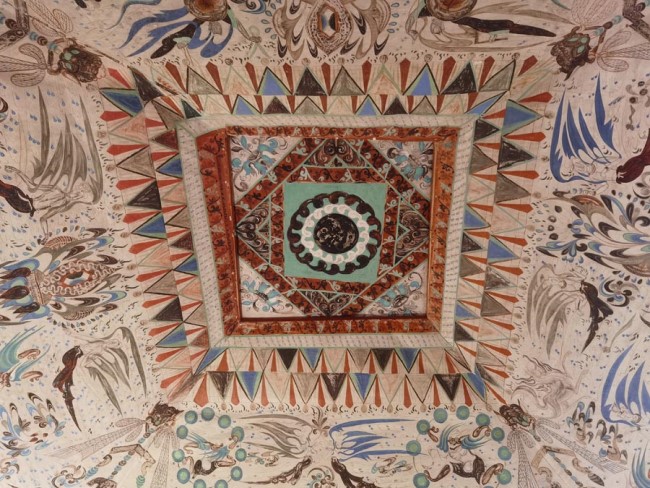Precious repositories of piety and prestige

Ceiling of the replica of Cave 285 of the Mogao site, which was on display in the Palace Museum in Beijing last year. [Photo by Wang Kaihao/China Daily]
Cultural transmission
Following the early grottoes of the Northern Liang era, grotto building began to flourish in Hexi, then elsewhere in China, as they were particularly favored by rulers. We thus see the royal projects of Yungang Grottoes in Shanxi province and Longmen Grottoes in Henan province.
People today may imagine the scenes of pilgrimages to the Buddhist temples and monasteries along the Hexi Corridor, but these have been lost to time. No such structures from that early period can be now seen from above the ground in the region.
"Thus, one of the great advantages of grottoes built in rock and stone is that they declare the piety and power of their patrons for eternity," Schmid says. "In this sense, Hexi grottoes are precious repositories of a rich cultural transmission that no longer exists elsewhere."
-
As AI encounters Dunhuang's art, the ancient caisson ceiling bridges centuries to the present.
View all stories

 Gansu thrives from green development
Gansu thrives from green development  >
>